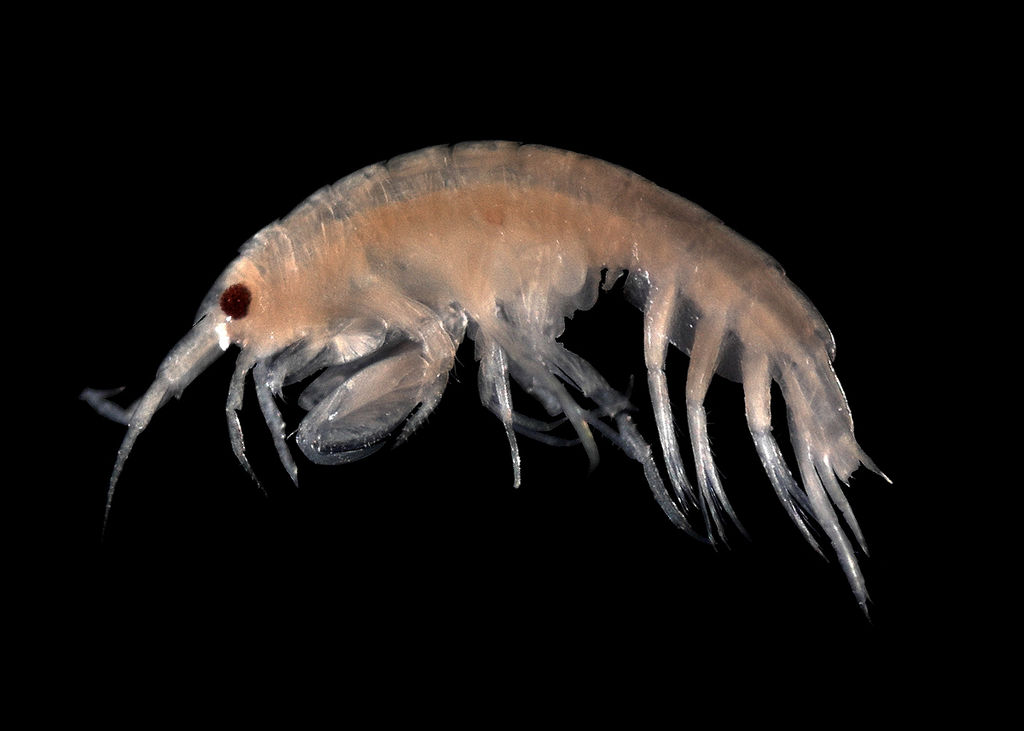SERVICE REQUEST?
Fill out the form below.
Find our nearest location
Your Local Office

Amphipod
Attribution: Hans Hillewaert, [CC-BY-SA-3.0], via Wikimedia Commons
Size:
¼- to 1-inch long
Color:
Usually dark brown or black but may appear red, pink, yellow, green or blue in color, depending on the species. Upon death, they often turn bright red.
Behavior:
Amphipods are commonly referred to as scuds and inhabit most oceans, lakes, rivers, beaches, caves and other warm moist environments. They are laterally compressed or flattened in shape and resemble small shrimp. They jump when disturbed which gives them their nickname of “beach fleas” or “sand hoppers.” These crustaceans are important members of the food chain, serving as food for many fish, invertebrates, shore birds and other animals. They are also important as scavengers of carrion and detritus. Drought, excessive rain and prolonged watering of landscaping may cause amphipods to seek better living conditions, thus bringing them into a home or building. Upon death indoors, their desiccated bodies often turn bright red.
Amphipods may be found in highly moist forest litter and other dense ground cover where they may burrow into the top few inches of soil. They are commonly found living beneath ivy used as a ground cover.
Amphipod indoor invasions occur when conditions outside support large numbers of these crustaceans. Treatments can provide short-term relief, but correction of such conditions is key to long-term success. Altering or eliminating excess moisture conditions next to a building may be helpful, particularly as it relates to watering landscapes and lawns, as well addressing drainage issues. Thick ground covers such as ivy, “monkey” grass, etc. should not be located next to or near a foundation as it provides harborage for innumerable insects, spiders, mice and other pests. Items in contact with the soil should be removed, wherever possible. Exterior cracks and holes should be sealed, especially along the foundation. Weep holes can be “closed” by stuffing pieces of wire mesh or screening into the openings. Inside treatments usually are not needed because amphipods dry out quickly and die.
Family Name:
Class Crustacea, Order Amphipoda
Read What Our Clients
Are Saying
My Terminix tech Scott is the best! He is professional, courteous and absolutely thorough about his job. Thank you for sending such a blessed tech to my house. Hamlet, NC
This letter is to say how pleased we are here at Morreene West Apartments with your services. We are very pleased with the technician, Christopher. He does a great job. Durham, NC
Terminix has consistently offered our apartment complex reliable, competent service. We are completely satisfied with their knowledgeable representative who is always punctual and does a superior job for us every time. Chapel Hill, NC
I would like to take the time to thank you for giving us such great service here at Carver Pond Apartments. Your Pest Technician Christopher Mitchell has provided us with excellent service over the last few months. Christopher is such a great help to us in providing helpful information so that we can better serve our residents here at Carver Pond. Durham, NC
SERVICE REQUEST?
Fill out the form below.